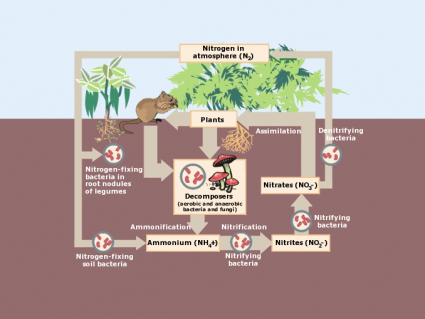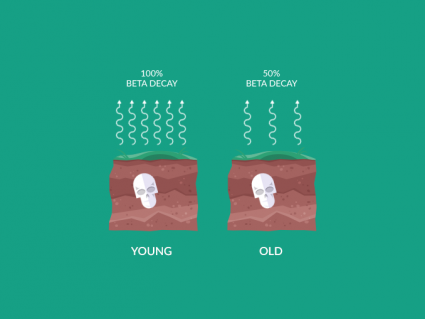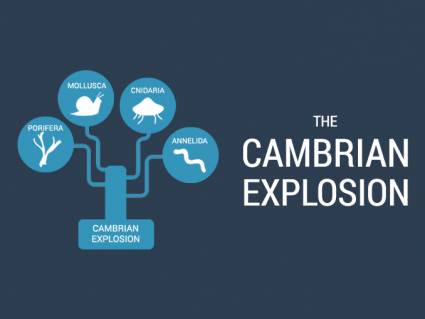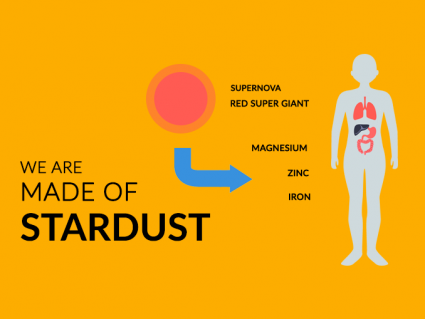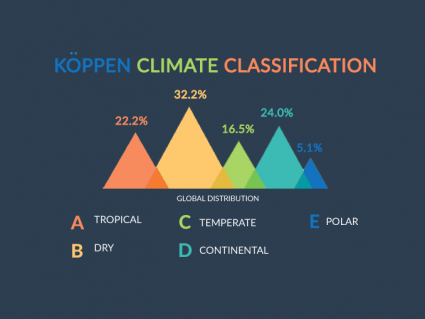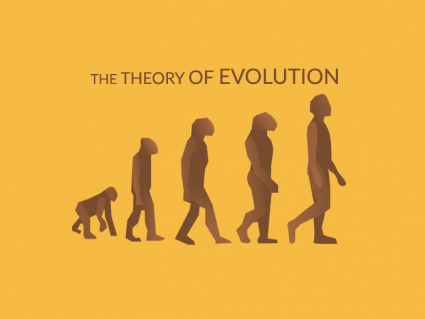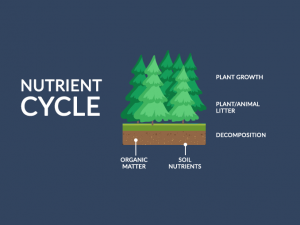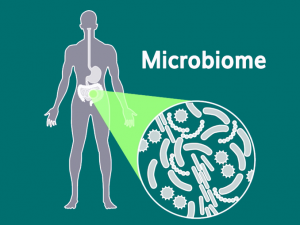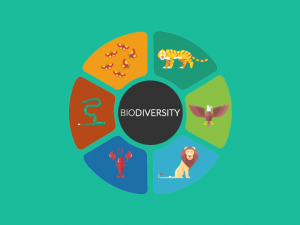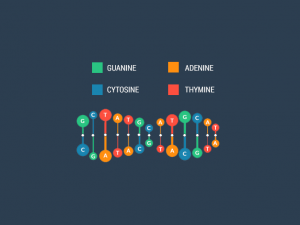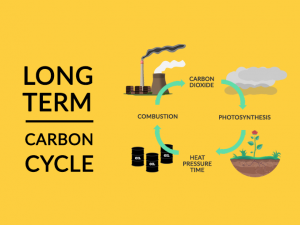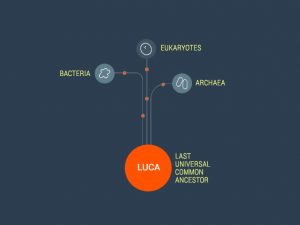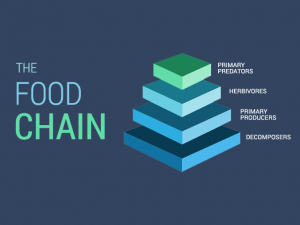What Are Chloroplasts: The Tiny Factories in Plants
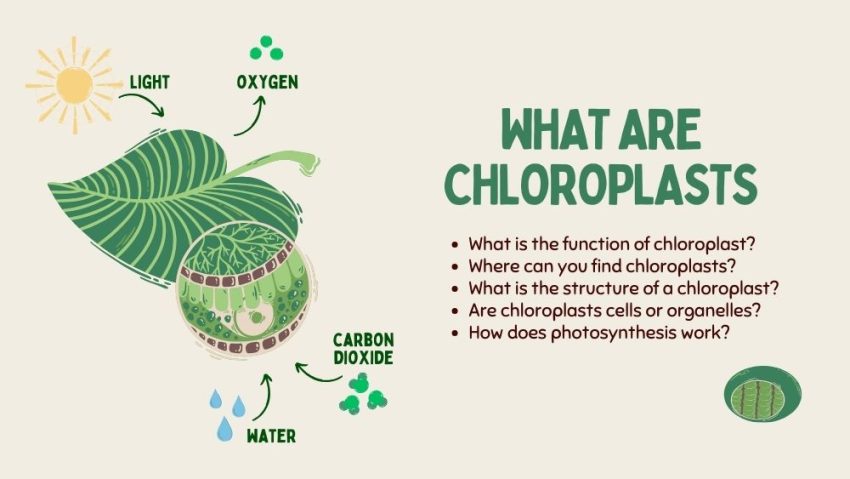
What is the function of a chloroplast?
The main job of chloroplasts is to capture sunlight and turn it into food for the plant. This process is called photosynthesis.
Just like how we need food to survive, plants need the food produced by chloroplasts to grow and stay healthy.
So, in simple terms, chloroplasts are like the plant’s food factories powered by sunlight.
Where can you find chloroplasts?
Chloroplasts are found inside plant and algae cells. More specifically, they are located within the cytoplasm of plant cells.

These tiny green structures are abundant in parts of the plant that are exposed to sunlight, such as the leaves and sometimes in the stems.
What is the structure of a chloroplast?
Think of a chloroplast as a tiny solar-powered factory inside a plant cell. It’s made up of different parts including:
1. Outer membrane
This is like the factory’s outer wall, protecting everything inside.
2. Stroma
This is the factory’s production area where important reactions happen.
3. Thylakoids
These look like pancakes inside the cells. They contain green molecules called chlorophyll, which capture sunlight.
4. Grana
Imagine these as stacks of pancakes neatly piled up. The chlorophyll on the thylakoids captures sunlight here.
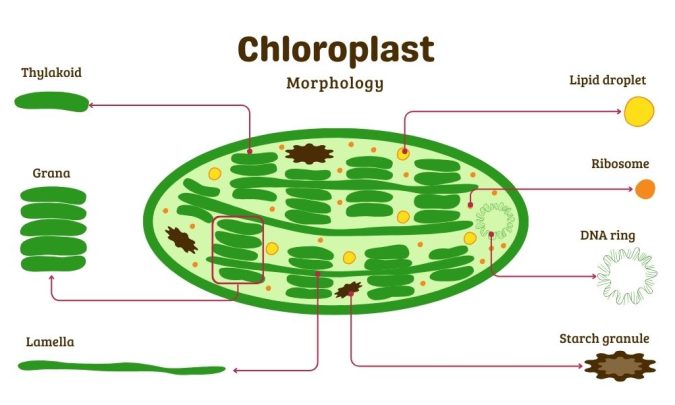
5. Starch Granules
Chloroplasts can store energy in the form of starch granules. These granules appear as small, dense structures within the stroma.
6. Lamellae
Lamellae are like the compartments in the factory where different parts of the assembly process happen. These compartments (lamellae) help the plant cell make food (photosynthesis) by using sunlight, water, and carbon dioxide.
7. Ribosomes
Inside this factory, there are tiny workers called “ribosomes.” These workers are like the little builders that help make the food. Just like an assembly line, these ribosomes combine special parts to create the food that the plant needs.
8. DNA Ring
Just like how a factory has an instruction manual to assemble different things, the chloroplast has one too. But in the chloroplast, this instruction manual is a tiny, circular ring, and it’s called DNA. This DNA ring tells the chloroplast how to make the plant’s food using sunlight, water, and carbon dioxide.
So, a chloroplast morphology is like a factory with special tools (thylakoids and grana) that use sunlight to create food for the plant.
Are chloroplasts cells or organelles?
Before we can answer this question, what’s the difference between a cell and an organelle? The main difference between cells and organelles is in their size and function.
First, cells are the basic structural and functional units of all living organisms. They can be independent entities and carry out all the processes of life on their own. Cells can grow, reproduce, respond to their environment, and perform functions necessary for life.
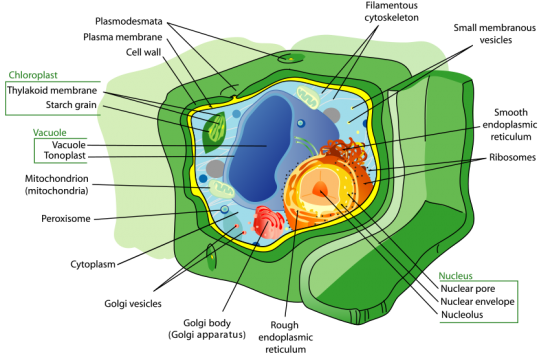
On the other hand, organelles are smaller, specialized structures found within cells. They have specific functions that contribute to the overall function of the cell. Organelles are like tiny “organs” within the cell, each with its own role. For example, the nucleus, mitochondria, and chloroplasts are all organelles.
So in the case of a chloroplast, these are small structures found inside plant cells. They are not full cells. Instead, chloroplasts are organelles. Chloroplasts have a specific job, which is to capture sunlight and carry out photosynthesis to make food for the plant.
Cells are the fundamental units of life. Whereas chloroplasts are specialized organelles found within plant cells. Finally, plant tissues are groups of similar cells that work together to perform a specific function.
Photosynthesis within the Chloroplast
In the diagram below, you’ll see some parts of a chloroplast that you should already be familiar with like the stroma, grana, thylakoid, and lamella.
Let’s break down how photosynthesis works, related to NADP+, ADP, ATP, and NADPH:
- Sunlight: Just like how you need ingredients to make a sandwich, plants need sunlight to start photosynthesis.
- Carbon Dioxide (CO2): Plants take in carbon dioxide from the air, which is another special ingredient for them.
- Water (H2O): They also drink water from the ground through their roots, like you drink a glass of water.
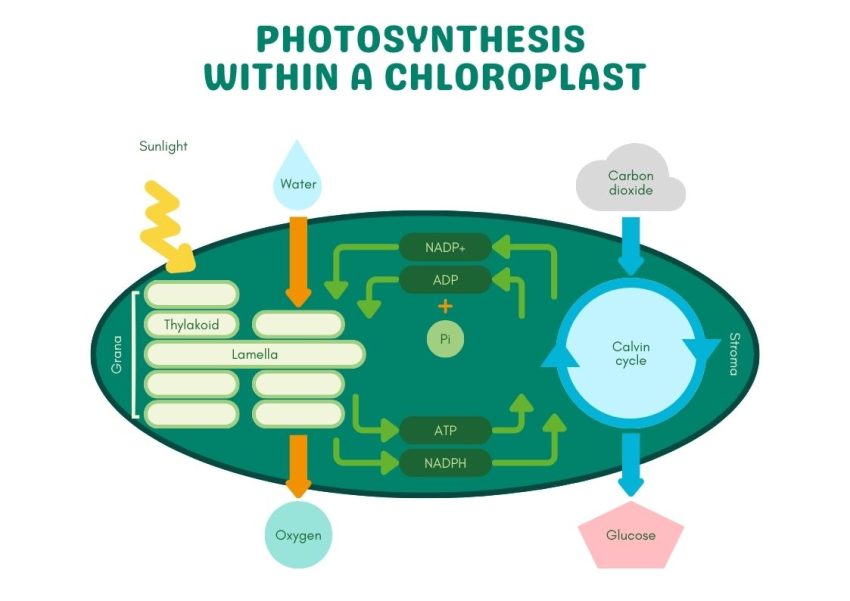
Now, here’s where NADP+, ADP, ATP, and NADPH come into play:
- NADP+: Imagine NADP+ as a container that helps carry and store special energy. In photosynthesis, it gets filled with energy, like a water bottle filling up with water.
- ADP: Think of ADP as a battery that needs to be recharged.
- ATP: ATP is like a fully charged battery, full of energy. It’s what plants use to do all their activities.
Here’s how it all fits together:
- Light Reactions: When plants get sunlight, they use that energy to turn NADP+ into NADPH. They also recharge ADP to turn it into ATP, like giving energy to a battery.
- Calvin Cycle: With their NADPH and ATP full of energy, plants can now use these to turn carbon dioxide into sugar, which is their food.
So, photosynthesis is like a plant’s way of making food using sunlight, carbon dioxide, and water. NADP+, ADP, ATP, and NADPH are like tools and energy carriers that help plants in this process.
It’s a bit like following a recipe, but plants make their own energy instead of food.
Summary: Chloroplasts
Chloroplasts are organelles found in the cells of plants and algae. They play a crucial role in photosynthesis, the process by which light energy is converted into glucose.
Chloroplasts contain chlorophyll, a green pigment that captures light during photosynthesis. Inside chloroplasts, various membranes and structures work together to facilitate photosynthesis.
In addition to their role in energy production, chloroplasts are involved in other cellular processes. This contributes to the overall function and structure of plant cells.

